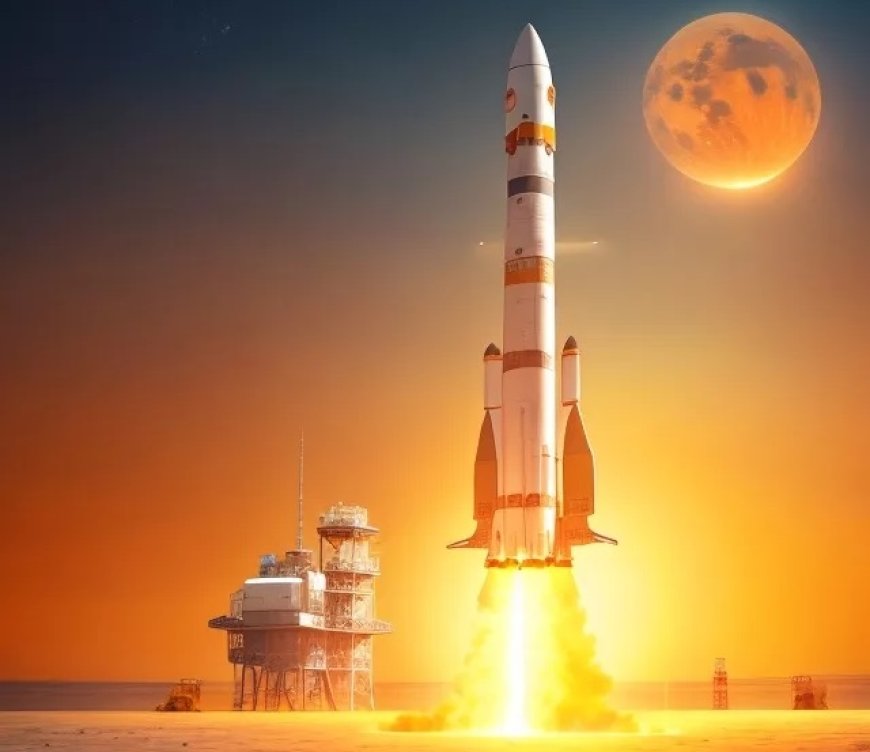Aditya L1: India's Solar Odyssey to the Sun
Aditya-L1 is India's first solar mission, launched on September 2, 2023. The spacecraft will travel to the L1 Lagrange point, a gravitationally stable spot between Earth and the Sun, where it will study the Sun's atmosphere, solar magnetic storms, and impact on the environment around Earth. Aditya-L1 is expected to provide valuable insights into the Sun's behaviour and help us better understand space weather.

Space exploration has always been a field of great intrigue and discovery. From exploring distant planets to understanding the vast cosmos, humans have made significant strides in unraveling the mysteries of the universe. One such remarkable mission is the Aditya L1, India's ambitious endeavor to study the Sun up close. In this blog, we'll delve into the details of Aditya L1, its objectives, significance, and the advancements it brings to solar science.
The Aditya L1 mission was conceived and developed by the Indian Space Research Organisation (ISRO) as part of its broader effort to explore the mysteries of our nearest star, the Sun. The mission was named after the Sun god, Aditya, symbolizing the mission's focus on studying the Sun. Announced in 2008, the Aditya L1 mission represents India's dedication to advancing space science and understanding solar phenomena.
Key Objectives
1. Understanding Solar Activity: One of the primary goals of Aditya L1 is to observe and study the various aspects of solar activity. This includes monitoring the Sun's surface, its outermost layer (corona), and studying the mechanisms behind solar flares, which can have significant implications for Earth.
2. Solar Magnetic Fields: The mission aims to investigate the Sun's magnetic fields, which play a crucial role in governing solar activity. Understanding these fields is essential to predict space weather events that can impact Earth's communication systems, power grids, and even astronauts in space.
3. Coronal Mass Ejections (CMEs): Aditya L1 will specifically focus on studying Coronal Mass Ejections, which are massive bursts of solar wind and magnetic fields that can disrupt satellite communications, GPS systems, and even electrical grids on Earth. By studying CMEs, the mission seeks to improve our ability to forecast and mitigate their impacts.
4. Solar Variability: The Sun goes through natural cycles of varying activity levels. Aditya L1 aims to provide valuable data about these variations, helping scientists understand the Sun's long-term behavior and its potential effects on climate change.
Significance of Aditya L1
1. Space Weather Prediction: Solar flares and CMEs can unleash harmful radiation and disrupt satellite communications and power grids on Earth. Aditya L1's data will enhance our ability to predict and mitigate the impact of such space weather events, safeguarding our technological infrastructure.
2. Scientific Advancements: The mission will contribute significantly to our understanding of solar physics. The Sun, despite being our closest star, still holds many secrets. Aditya L1's observations will aid in deciphering these mysteries and expanding our knowledge of stellar science.
3. International Collaboration: Aditya L1 represents India's increasing role in international space research. Collaborations with space agencies from around the world can facilitate data sharing and further our collective understanding of the Sun.
4. Space Exploration: Studying the Sun is crucial for planning future space missions, especially those sending astronauts beyond Earth's protective magnetic field. Understanding solar radiation and its variability is essential for ensuring the safety of astronauts on long-duration missions to the Moon and Mars.
The Aditya L1 mission, like any other space mission, comes with its set of challenges. These include the harsh conditions near the Sun, the need for advanced heat-resistant materials, and precise engineering to protect the spacecraft from extreme radiation.
However, as technology advances and our understanding of space grows, missions like Aditya L1 open up exciting possibilities for the future. Solar science is central to many aspects of space exploration, and the knowledge gained from this mission will undoubtedly have far-reaching implications.
The Aditya L1 mission represents India's commitment to advancing space science and understanding the Sun, which has a profound influence on our planet and the entire solar system. With its objectives centered on studying solar activity, magnetic fields, and space weather events, Aditya L1 holds the promise of revolutionizing our understanding of the Sun and its impact on our interconnected world. As the mission unfolds, it will undoubtedly contribute to a brighter, more informed future in space exploration and solar science.
What's Your Reaction?

















































